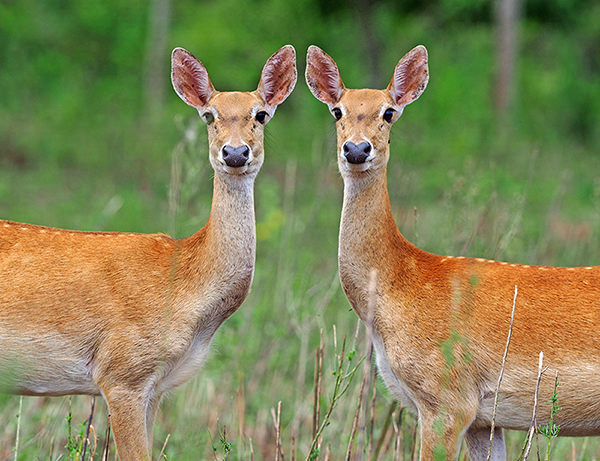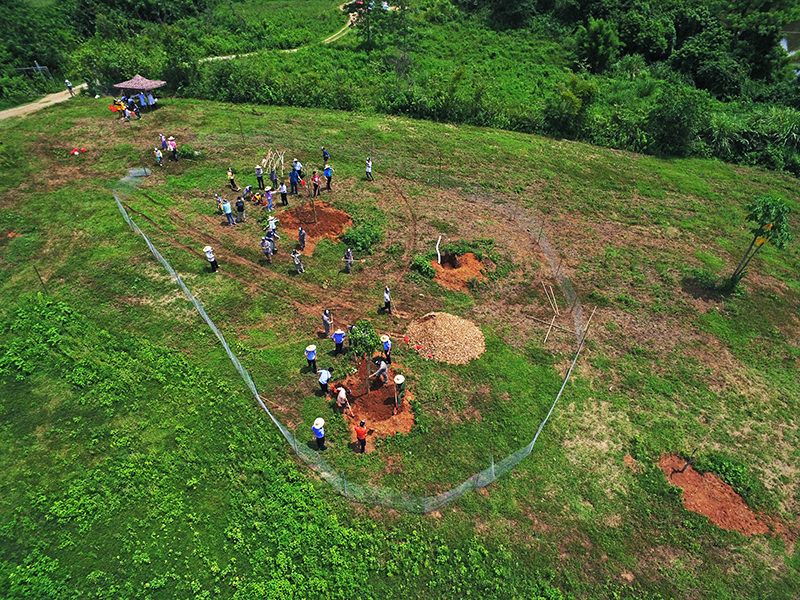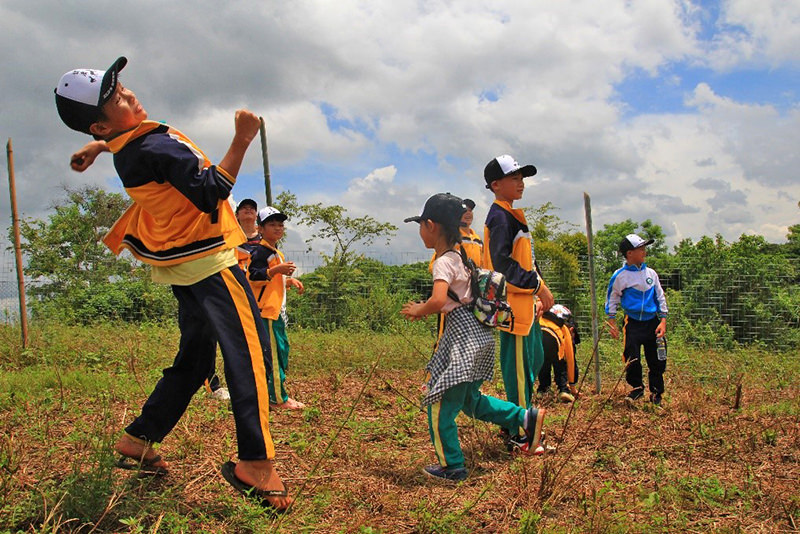Planting Trees for Hainan Eld’s Deer
China is blessed with rich biodiversity but at the same time many of which are highly threatened. The huge size of the country, coupled with the number of threatened species and limited resource input for conservation, could explain the fact that even some large-sized and charismatic animals are neglected by the government and conservationists. While species conservation calls for government support and stakeholder engagement, public awareness also plays a pivotal role in successful conservation initiatives. Therefore, Kadoorie Conservation China (KCC) not only focuses on what is actually being done on the ground (say, how a nature reserve is being managed), but also makes sure that there is enough voice to amplify the positive impacts.
In Hainan Province, there is a tiny nature reserve designated to protect an extremely rare but neglected species of deer - the Hainan Eld’s Deer (Rucervus eldii hainanus). Hainan Bangxi Provincial Nature Reserve measures a minute 3.6 km2, but it holds more than 12% of the entire deer population in China (the total population is about 800). Bangxi has been in existence since 1976, but has been in relative obscurity with virtually no external support. Since the Reserve is in fertile lowland, it is surrounded by villages. In order to prevent the deer from dispersing into farmlands and cause crop-damage, and to keep poachers away, fences were built inside the Reserve some two decades ago. When the deer population grew in this confined area from 18 individuals in 1992 to about 100 at present, overgrazing becomes an unavoidable issue. Thus, habitat management and enhancement become a major challenge for the Reserve.

Two female Hainan Eld’s Deer in Bangxi Nature Reserve, Hainan
Highly degraded habitat in Bangxi Reserve, Hainan
In the old days, it was thought that planting fodder grasses as in pasture is the most efficient way to ensure food supply for the deer. But studies of the deer’s diet and feeding habits indicated that they have a diverse diet. KCC believes the mixed planting of fodder grasses, shrubs and trees would provide a far more natural, balanced and superior quality food source. And at the same time, the vegetation would become more natural and diverse, providing better habitats for the deer as well as other wildlife.
Planting of monoculture Napier grass (Pennisetum purpureum) aiming to improve food availability for the Eld’s deer; a method we discourage for ecological reasons
KCC was invited to collaborate with the Reserve in 2015, and during our initial visits, we have identified some serious management problems, including low staff morale and capacity. KCC saw the needs to intervene with both the species and the Reserve, and set our objectives to improve reserve management and habitat quality of the deer. Since 2015, we have been actively working with the Reserve to build up their confidence and capacity, and to raise the profile of Bangxi in Hainan and nationwide.
On 26th July 2017, a Tree Planting Day with the aims to enrich food sources for the deer and to promote Bangxi as an important refuge for threatened species was jointly organized by KFBG and Bangxi. Over 60 participants, including senior officials from Hainan and local forestry departments, directors of other Eld’s Deer reserves, representatives of the township government and local communities, and school-aged children took part in the activity. This event is a milestone of the Reserve, considering that it has never been opened to the public and held any similar activities. For a long time, there had been tensions between Bangxi and the local communities regarding land-use rights. Through outreach activities such as this, we are striving to improve stakeholder engagement and gain support for the Reserve and for our project.

Participants busy planting seedlings in a clump on the Tree Planting Day
On the Tree-Planting Day, seedlings of selected shrub and tree species which the deer feed on were planted individually or in clumps over an open grassland, mimicking the open dry forest which Eld’s Deer prefer elsewhere in its natural range. These plant species are either native or naturalized in Hainan, and their leaves or fruits can provide an important alternative food source for the deer during unfavorable seasons. Apart from planting seedlings, seed balls were also dispersed randomly over the grassland. Seed balls are made by mixing red earth, organic fertiliser and mixed grass seeds. When the next rain comes, the seeds will germinate, increasing the diversity and quantity of grassland for the deer.

Seed balls were created to enhance grass coverage and diversity, and it was fun throwing them
The activity not only enhanced the participants’ understanding of the Hainan Eld’s Deer and Bangxi Reserve, it was also widely reported in China’s national and local news channels. Videos and photos of Hainan Eld’s Deer and our activity were widely broadcasted throughout the country as well as overseas. We want to show to the world that in Hainan, an island with unique and rich biodiversity, there is a wildlife “celebrity” called the Hainan Eld’s Deer, which needs all of our attention and protection!

